The RAD H2O
The RAD7 with RAD H2O accessory is well suited for the measurement of radon in small samples of ground water or tap water. The RAD H2O kit comes with a collection of 40ml and 250ml vials for collecting samples, which can be conveniently analyzed on site or later in the lab. When a sampling vial is connected to the system, the RAD7’s internal pump moves air through the water sample, aerating it to separate the radon from the water. The RAD7 then analyzes the radon, automatically calculating the radon in water concentration based on the known ratio of air to water in the system. This analysis takes approximately 30 minutes and produces highly accurate results.
The RAD H2O has a comfortable operational range of between 10 pCi/L (400 Bq/m3) and 270,000 pCi/L (10,000,000 Bq/m3). Even higher concentrations can be detected by delaying the analysis until after the radon in the water sample has partially decayed. The RAD H2O kit measures 19″ x 16″ x 8″ (48 cm x 41 cm x 20 cm) and has a shipping weight of 15 pounds (6.8 kg).
The RAD AQUA
The RAD AQUA is an accessory for the Durridge RAD7 that is used for monitoring radon and thoron levels in a continuous water supply, such as running tap water, a flowing stream, or even sea water. The RAD AQUA contains a spray chamber which aerates the incoming water, bringing the radon concentration in the air into equilibrium with that of the water flowing through the instrument.
The radon in the air is monitored continuously by the RAD7, while a temperature probe measures the water temperature. Durridge’s Capture software is used to process the RAD7 data and the corresponding temperature probe data to calculate the concentration of radon in the water. The software also generates graphs displaying the radon concentration in water over time. The system quickly responds to changes in radon concentration, providing accurate results in under 30 minutes.
Besides being able to measure radon in water, the RAD AQUA can also measure thoron in water, despite thoron’s very short half-life. This gives the RAD AQUA the unique ability to detect underwater radon entry points.
The Water Probe
The Durridge Water Probe is used to monitor radon levels in bodies of moving water. The Water Probe consists of a semi-permeable Accurel membrane tube mounted on a stainless steel wire frame. The tubing is connected to the RAD7 in a closed loop.
When the Water Probe is lowered into the water, radon from the water begins passing through the membrane tube, but the water itself is not absorbed. After a few hours an equilibrium is achieved between the radon concentration in the air loop and the radon concentration in the water. The water around the probe should be moving, but unlike the RAD AQUA a separate pump is not required. The equilibrium ratio of radon in air to radon in water is determined by the temperature of the water, and the necessary math is performed by Durridge’s Capture software. The Water Probe has a similar sensitivity to the RAD AQUA, but the Water Probe takes longer to respond to changes in the radon concentration.
Note: The Water Probe is currently unavailable
The Big Bottle System
The Big Bottle System is a RAD7 accessory enabling users to accurately measure radon in large water samples of up to 2.5L in volume. Large samples allow for greater precision and lower limits of detection. Radon concentrations of as low as 1 pCi/L (37 Bq/m3) can be detected with a sufficiently large sampling bottle; this is sensitive enough for detecting radon in most coastal waters. The upper operating limit of the Big Bottle System is 10,000 pCi/L (370,000 Bq/m3). Ranges higher than that are detectable with the standard RAD H2O accessory, which uses small glass sampling vials. Results can be obtained quickly; even for the lowest radon concentrations it is possible to obtain an accurate reading within two hours of collecting the water sample.
The Big Bottle System consists of several components, including a set of 2.5L glass jugs, a tubing set for connecting to the RAD7 and drying apparatus, an aerator cap, a retort stand, a USB temperature logger with hermetically sealed thermocouple, and an elastic clinching strap. The complete Big Bottle System is portable and requires no power source besides that used by the RAD7 itself.
For added convenience and versatility, the Big Bottle System can be used with standard soda bottles of any size, from 500ml to 2L (available at any convenience store!). This configuration requires the Soda Bottle Aerator Kit accessory, which supports an aerator system similar to that used by the standard 2.5L glass jug. With a 500ml plastic soda bottle it is possible to measure comfortably down to below 5 pCi/L (200 Bq/m3). While soda bottles lack the size benefits of the larger 2.5L jug, they have the advantage of being inexpensive and shatter-proof.
Durridge’s Capture software makes it easy to collect and interpret results from the Big Bottle System. Capture calculates the concentration of radon in water based on the data downloaded from the RAD7, along with water temperature records recorded by the included temperature logger during the aeration process. Capture also accounts for the particular configuration of the laboratory apparatus, with consideration given to the volume of the bottle and the laboratory drying unit, the tubing structure, and even a DRYSTIK, if one is present. The calculated data can then be viewed as a graph and exported to a spreadsheet or other software for additional analysis.
Of all the Durridge radon in water accessories, the RAD7 H2O offers the highest upper limit of detection. For the other accessories, groundwater radon concentrations may be high enough to pose difficulties. To safely encompass all likely radon concentrations it is best to have the RAD H2O for groundwater and at least one of the three others for sea water.
Application Note: Measuring Radon In Surface and Well Waters
Durridge offers several alternative methods of measuring radon in surface waters, as well as a method for the measurement of piezometer well water. Surface waters generally have radon concentrations below 100 Bq/m3 and often below 50 Bq/m3. Standard methods of measuring radon in water impose a lower limit of 400 Bq/m3 for a marginally precise (±30%) reading. Durridge therefore developed the RAD AQUA, which brings a closed air loop into equilibrium with a continuous flow of sample water, resulting in a lower limit of about 4 Bq/m3 with a precision level of ±5%. For radon concentrations of 1 Bq/m3, the level of precision is ±10%.
The intrinsic background of the RAD7 for radon in air measurement is no more than 0.005 pCi/L (0.2 Bq/m3). At room temperature this translates to a 0.00135 pCi/L (0.05 Bq/m3) background radon concentration in the water (this is due to an approximately 4:1 ratio of radon in air to water once it has reached equilibrium). If that value is subtracted as a zero offset, radon-in-water concentrations may be measured down to 0.0027 pCi/L (0.1 Bq/m3) with ±25% precision. At such low concentrations however it may take a day or more of continuous measurement in order to accumulate the number of counts needed to reach the stated precision level.
For piezometer wells the high-gain, ultra-low concentration limits offered by the RAD AQUA are not needed, and discreet water samples may be preferred over a continuous flow out of the well. For such applications the Durridge RAD H2O works well. With the RAD H2O, samples are taken in 40ml or 250ml vials, and an automated RAD7 analysis may be performed in as little as 30 minutes.
As a compromise, Durridge offers the Big Bottle System, which comes in two flavors, one with a 2.5L glass jug, and another fitting PET plastic soda bottles, which are known to be able to contain radon without loss, and which can usually be purchased (full of soda!) in sizes ranging from 350ml to 2L. With 2L soda bottles it is possible to measure radon concentrations down to 1 pCi/L (37 Bq/m3). For piezometers, 350ml soda bottles are suitable.


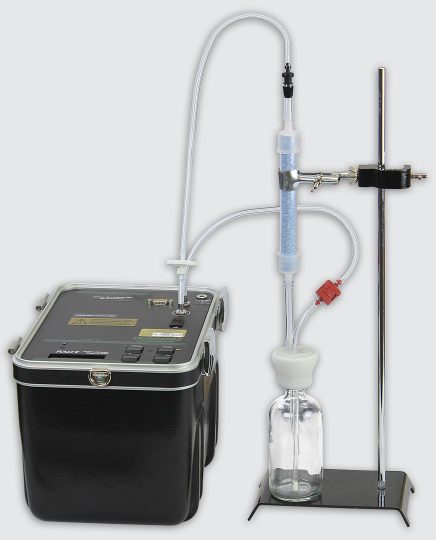
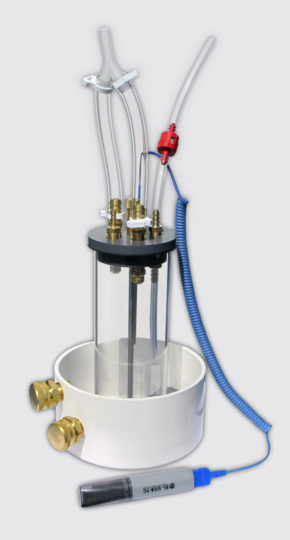

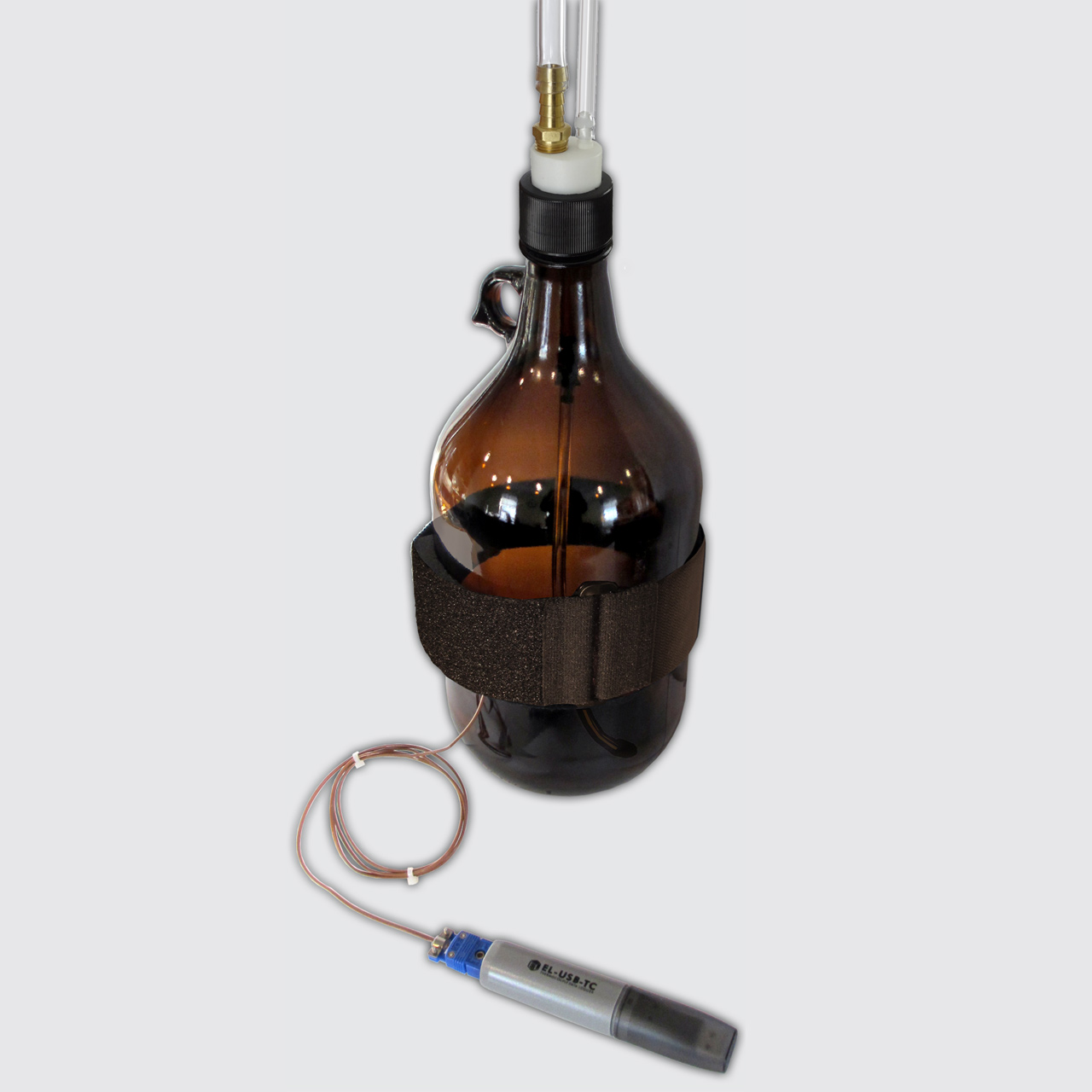
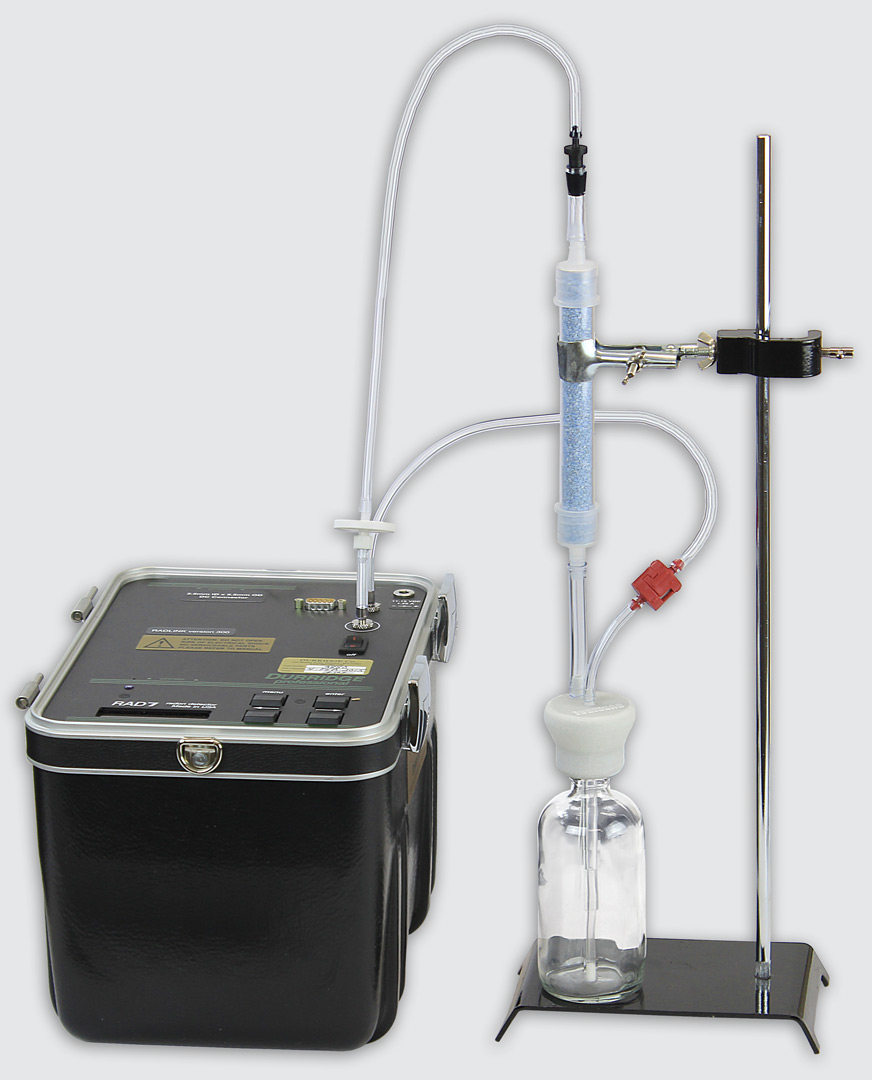 RAD H20
RAD H20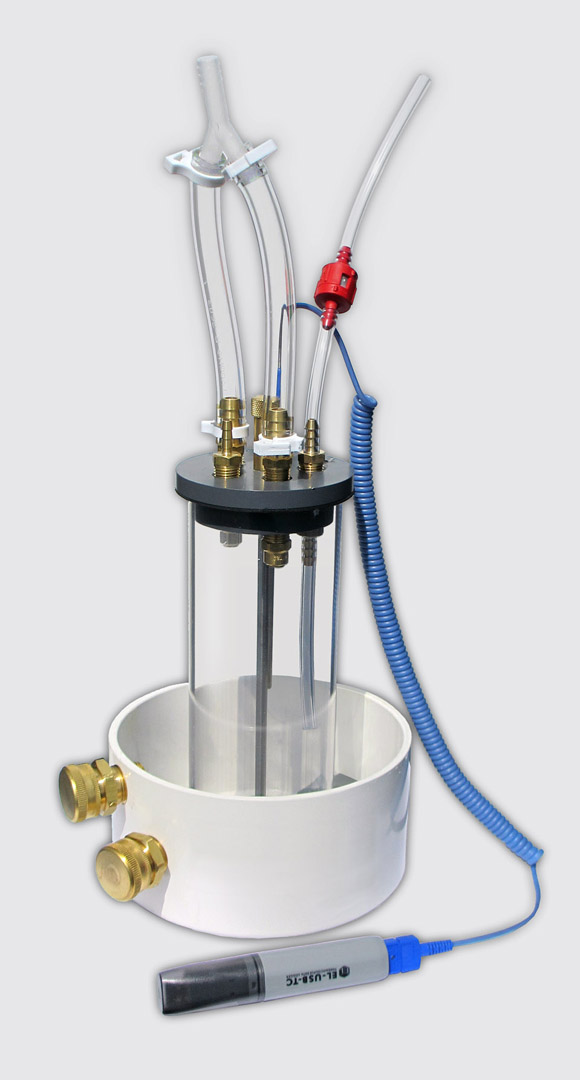 RAD AQUA
RAD AQUA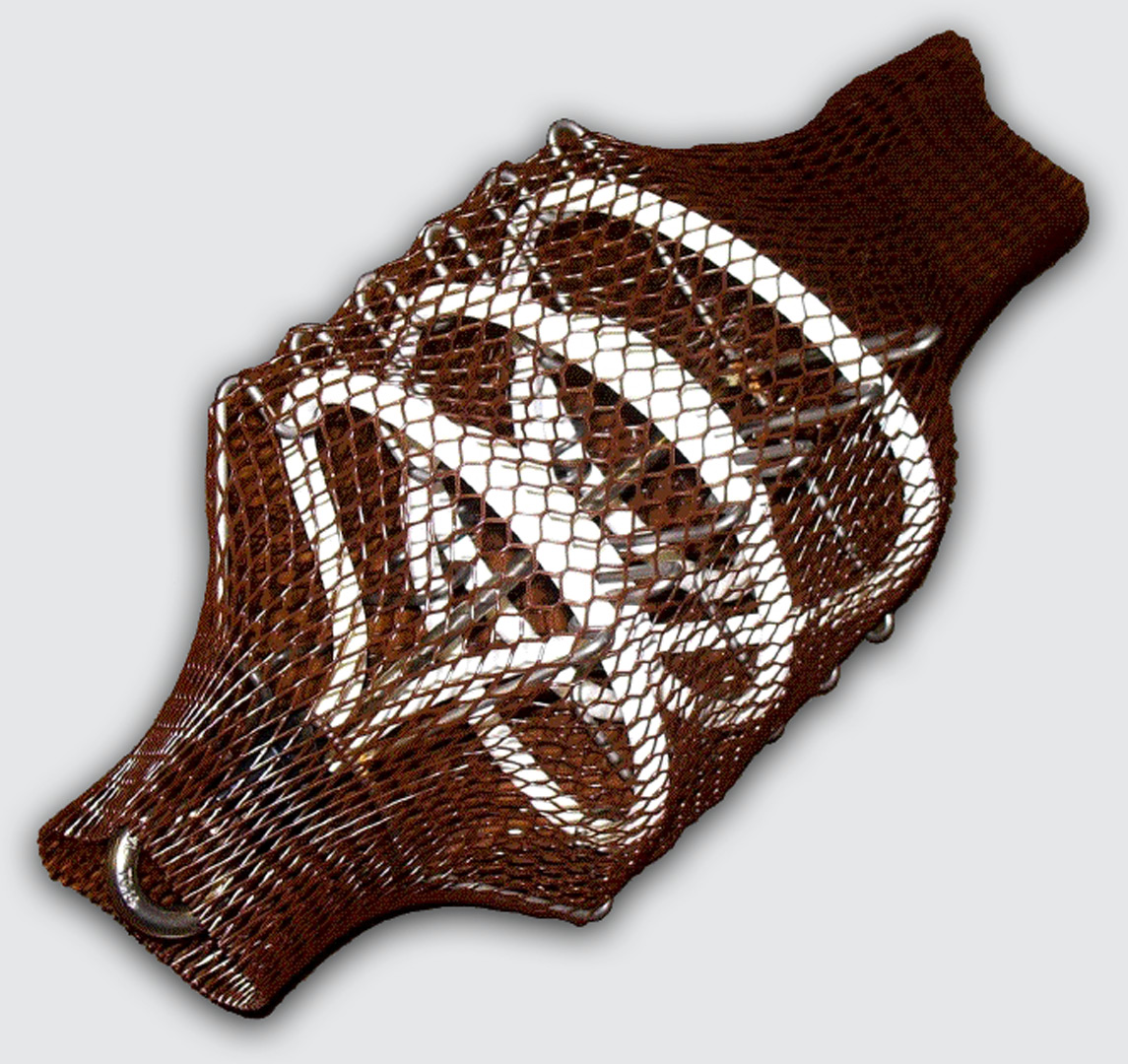 Water Probe
Water Probe